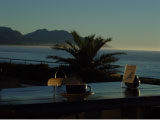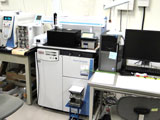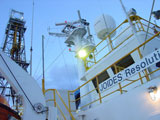


Welcome to HASEGAWA Lab.
welcome

When we try to understand the changing environment of the Earth, we observe strata. A sheet of stratum consists of various grains like clay, sand and calcareous nannofossil which accumulated on the sea floor simultaneously. What the important thing is 'Contemporaneousness'. A stratum is a 'Time slice', a phase of a vast amount of 'Time'. We can find the same time slice on the other side of the world. A scene of the earth remains on the time slice as a photograph. Tracing the time slice is inextricably associated with reconstruction of paleoenvironment of the ancient earth. By combing time slices which record information of paleoenvironments, we can understand how the earth environment has changed as a movie. How has life changed through various radical environmental changes such as volcanic eruptions, oceanic anoxic events and meteorite impacts? Fossils have an important role to answer the question. Fossils are identified, and sometimes its fragments are analyzed through cutting-edge analytical instrumentations. The instruments find molecular fossils preserved in sediments that we cannot visually recognize, and then we will analyze those isotopic composition further. Our laboratory tries to understand the world of the Cretaceous, the age of green house, and the evolution of life over hundreds of millions of years.
13.05.2012
Cretaceous Research, one of an international journal accepted our research.
24.04.2012
2 scientific research funds were adopted.
24.04.2012
Visited to Kyushu with J. Crampton, and observed the Himeura Group in Koshikijima islands together with the Kyushu University Museum.
29.03.2012
James Crampton (GNS Science) came to the Kanazawa University.
27.03.2012
Graduation Ceremony in 2012
02.03.2012 – 04.03.2012
MRC academic conference in Sendai.











